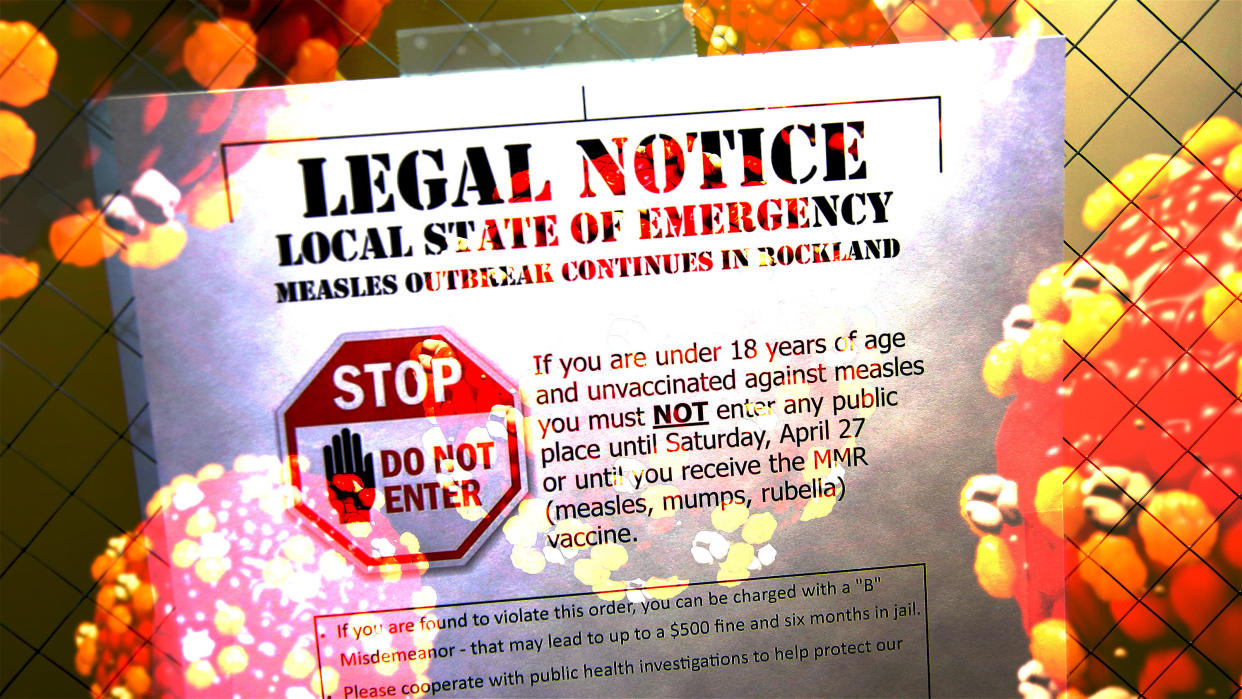Going viral: Measles spreads, but pro-vax messages gain ground

The internet — the place where the anti-vaccine message gained traction in the first place — might be turning in favor of vaccines, a preliminary study suggests.
The authors hold out hope that the same medium that led many parents to withhold the measles vaccine from their children, leading to outbreaks of a disease once thought to be eradicated, might be used to push the illness back into the past once again.
“The tide may be turning against the anti-vaccination movement,” wrote Filippo Menczer, an Indiana University professor of computer science and informatics, of his research quantifying and mapping the spread of false information on social media over the past five years. (His article appeared last week in the online academic ideas journal the Conversation.)
By tracking Twitter hashtags, he and graduate student Pik-Mai Hui have concluded that “pro-vax information and activity is beginning to push back against, and even overtake, anti-vax disinformation.”

The anti-vaccine movement was born in 1998, when British gastroenterologist Andrew Wakefield published a study based on falsified data linking vaccines and autism. The paper was since retracted, and Wakefield’s medical license was revoked in 2010. But the years since the paper was published are also the years of kudzu-like growth of the internet; 3.6 percent of the world’s population was online in 1998, compared with 56 percent today.
Wakefield’s views continue to be shared online, and as a result, an increasing percentage of parents, worried about the possible harm to their children, have refused to give them the MMR (measles, mumps, rubella) vaccine. State legislators have responded to parental fears, and while all 50 states require children to be vaccinated to attend school, nearly all grant exemptions for religious objections, and 17 also grant exemptions for philosophical reasons.
Vaccinations do not protect only the person who receives them. They also protect those in the population who for medical reasons, such as impaired immunity, cannot be inoculated. The mathematics of so-called herd immunity show that if 96 percent of the population is vaccinated against measles, then it is essentially eradicated, because the virus has no place to spread. That is why the disease was declared eliminated in the U.S. in 2000.
But very recently the percentage of non-vaccinated children has reached the point where new outbreaks are occurring. As of April 4 the Centers for Disease Control counted 465 individual cases of measles in outbreaks in Arizona, California, Colorado, Connecticut, Florida, Georgia, Illinois, Indiana, Kentucky, Massachusetts, Michigan, Missouri, Nevada, New Hampshire, New Jersey, New York, Oregon, Texas and Washington state — higher than the total of 372 for all last year, and closing in on 2014’s record of 667.

In response, health officials in Rockland County, N.Y., banned unvaccinated minors from public places for the duration of the outbreak. And in New York City, Mayor Bill de Blasio declared a health emergency in the Williamsburg section of Brooklyn and required that all residents of the area be vaccinated or face fines up to $1,000.
While the CDC has been counting cases, Menczer and Hui have been measuring the flow of information. From September 2016 through September 2018, they analyzed a random sampling of more than 40,000 tweets that contained the most frequently used pro- and anti-vax hashtags. They then classified the nearly 30,000 accounts that generated those tweets as either pro-vax or anti-vax and created virtual maps, with pro-vax accounts represented by blue dots and anti-vax ones by green. The result was tightly packed clusters of dots, like a photo-negative of the distinctive red rash of measles itself.
The blobs shifted markedly over the two years — changing from mostly green to mostly blue. And while the colors had been distinct and separate blobs in the earlier days — meaning that anti-vax accounts retweeted only anti-vax messages — over the last year “we observe some blue nodes connected to the green clusters,” the study authors wrote, “suggesting that pro-vax information is beginning to penetrate the anti-vax community.”
Whether this shift in information flow results in a shift upward in vaccination rates remains to be seen.
Political commentators lament that modern-day information is disseminated in silos, hardening the political debate as people hear only what they already believe. This single, early study hints at the possibility of cross-pollination between silos, a metaphorical inoculation of information.
“If [this] preliminary finding is confirmed by other research,” the authors wrote, “it could provide evidence that the combined efforts of social media platforms, health organizations, public policy campaigns and grassroots advocacy may eventually overcome anti-vax junk science.”
_____
Read more from Yahoo News:


